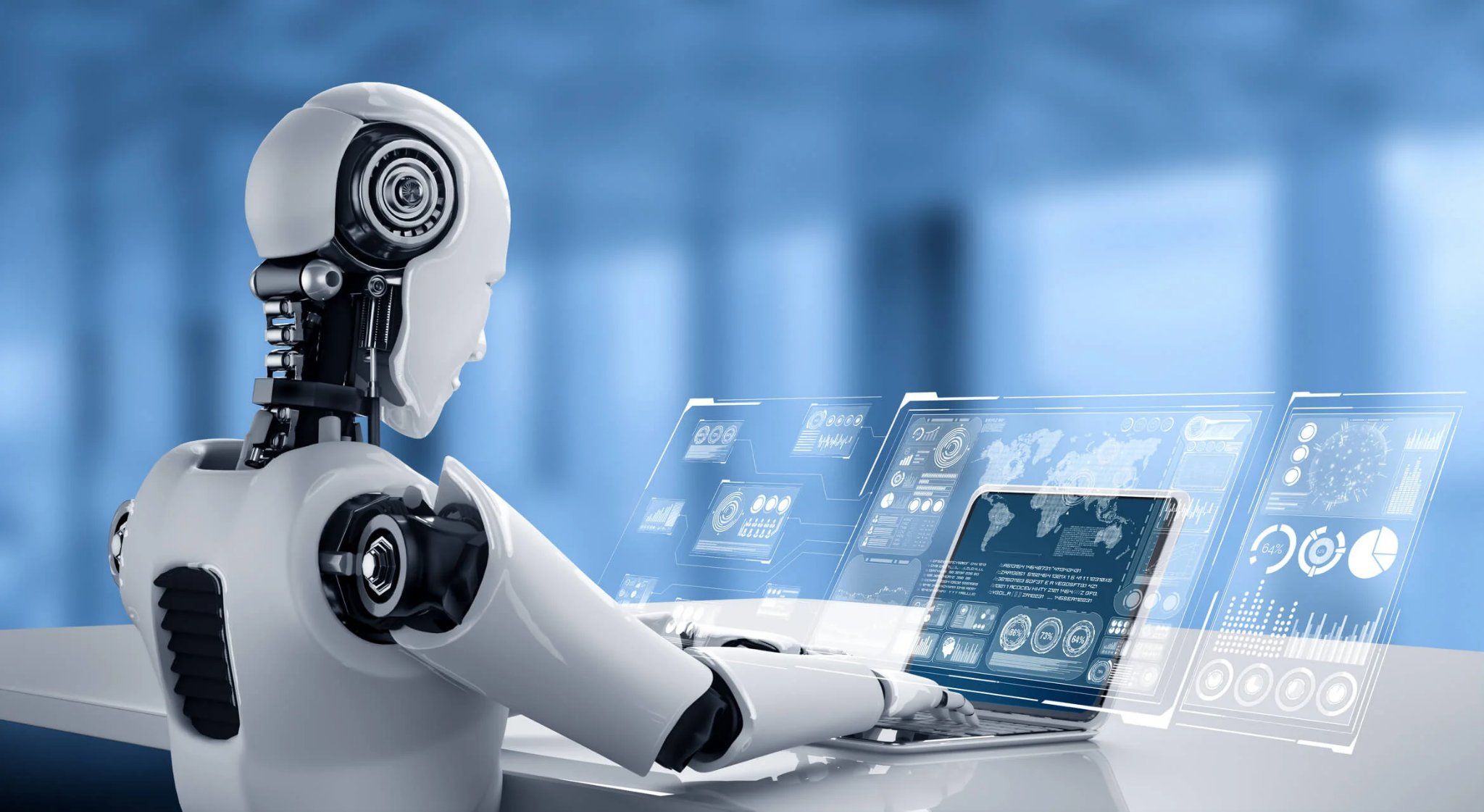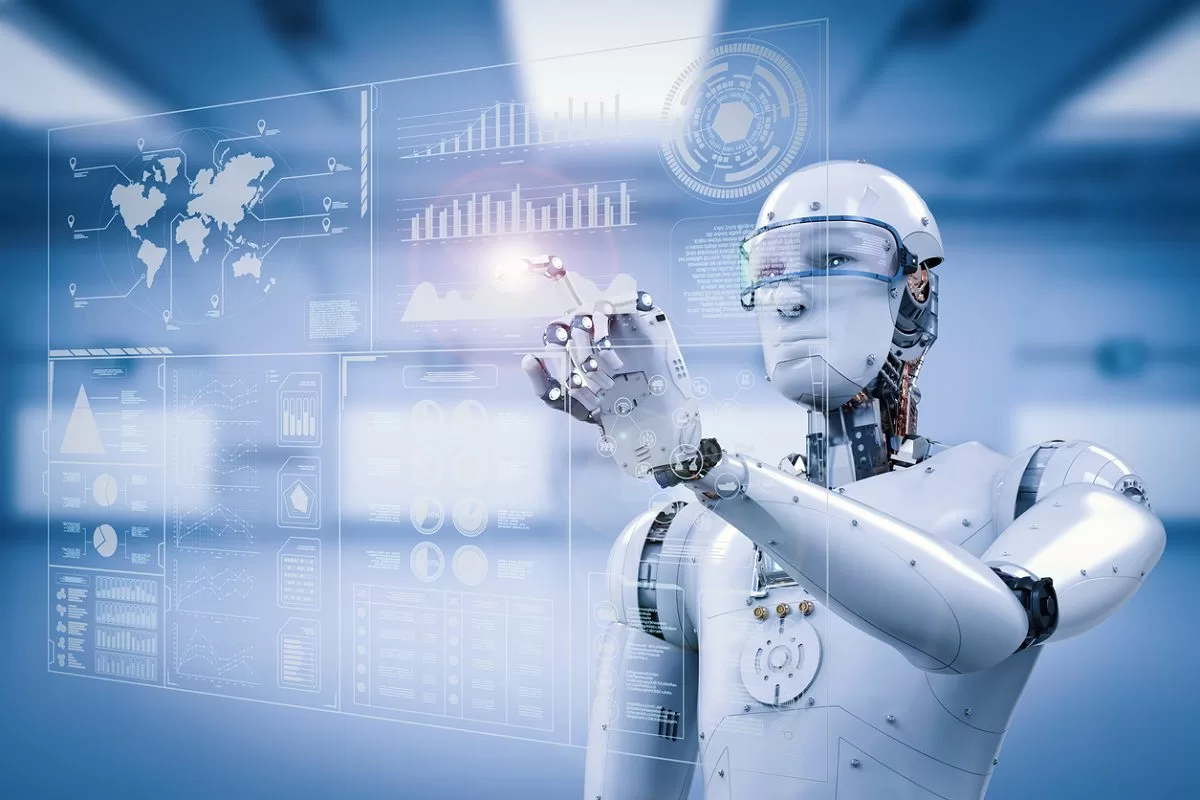


Introduction
Artificial Intelligence (AI) has emerged as a transformative technology, revolutionizing various industries and sectors. In today’s rapidly evolving digital landscape, AI tools play a pivotal role in enhancing productivity, automating tasks, and generating valuable insights. This article explores the 3 top AI tools that are reshaping the way we work and innovate. From natural language processing to machine learning algorithms, these tools have the potential to unlock new opportunities and drive significant advancements in diverse domains.
1. Natural Language Processing (NLP)
Understanding the Power of NLP
Natural Language Processing (NLP) is a branch of AI that focuses on the interaction between computers and human language. It enables machines to comprehend, interpret, and generate human language, transforming unstructured text into structured data. NLP facilitates tasks such as sentiment analysis, language translation, chatbots, and text summarization.
Applications of NLP in Real-world Scenarios
NLP finds applications in a wide range of real-world scenarios. One notable example is voice assistants like Siri and Alexa, which employ NLP techniques to understand user commands and provide accurate responses. In addition, NLP powers automated customer support systems by analyzing and categorizing customer feedback to improve service quality.
Benefits of NLP
NLP offers several benefits, including:
- Efficient Information Retrieval: NLP tools enable users to extract relevant information from vast amounts of unstructured data, saving time and effort.
- Enhanced Decision-making: By analyzing text data, NLP empowers organizations to make data-driven decisions, uncover patterns, and identify trends that would otherwise be challenging to discern.
- Improved Customer Experience: NLP-driven chatbots and virtual assistants provide personalized and efficient customer support, enhancing overall satisfaction.
2. Computer Vision
Unveiling the Potential of Computer Vision
Computer Vision is an AI tool that enables computers to gain a visual understanding of the world. It involves the extraction, analysis, and interpretation of information from images or videos. With advancements in deep learning algorithms, computer vision has reached new heights, surpassing human-level accuracy in several tasks.
Real-world Applications of Computer Vision
Computer Vision finds applications in various fields:
- Autonomous Vehicles: Computer vision algorithms play a vital role in enabling autonomous vehicles to perceive their surroundings, detect obstacles, and make informed decisions.
- Medical Imaging: Computer vision aids in diagnosing medical conditions by analyzing medical images, such as X-rays and MRIs, assisting doctors in accurate diagnoses and treatment plans.
- Quality Control in Manufacturing: Computer vision systems are employed to inspect products, identifying defects and ensuring consistent quality during the manufacturing process.
Benefits of Computer Vision
Computer Vision offers numerous benefits, including:
- Automation and Efficiency: By automating visual tasks, computer vision reduces human effort and enhances productivity across various industries.
- Enhanced Safety: Computer vision-based surveillance systems enable real-time monitoring, enhancing safety and security in public spaces and critical infrastructures.
- Improved Accessibility: Computer vision helps in creating technologies that enable visually impaired individuals to navigate and interact with the world more effectively.
3. Machine Learning
Harnessing the Power of Machine Learning
Machine Learning (ML) is a subset of AI that focuses on developing algorithms that can learn from data and improve their performance over time without explicit programming. It enables computers to automatically identify patterns, make predictions, and gain insights from complex datasets.
Real-world Applications of Machine Learning
Machine Learning finds applications in various fields:
- Recommendation Systems: Machine Learning algorithms power recommendation systems used by popular platforms like Netflix and Amazon. These algorithms analyze user preferences and behaviors to provide personalized recommendations.
- Fraud Detection: Machine Learning models can detect fraudulent activities by analyzing patterns and anomalies in large datasets, helping financial institutions prevent financial losses.
- Medical Diagnosis: Machine Learning algorithms assist healthcare professionals in diagnosing diseases by analyzing medical data such as symptoms, medical history, and test results, improving accuracy and speed of diagnoses.
Benefits of Machine Learning
Machine Learning offers several benefits, including:
- Automation and Efficiency: Machine Learning automates repetitive tasks, allowing businesses to streamline processes, reduce costs, and improve overall efficiency.
- Data-driven Insights: Machine Learning algorithms can extract valuable insights from large datasets, enabling organizations to make informed decisions and uncover hidden patterns or trends.
- Predictive Capabilities: By analyzing historical data, Machine Learning models can make accurate predictions and forecasts, helping businesses anticipate customer behavior, demand trends, and market dynamics.
3 TOP AI TOOLS
Artificial Intelligence has brought forth a multitude of tools and technologies that are transforming industries. Let’s take a closer look at the 3 top AI tools:
- Natural Language Processing (NLP): NLP enables machines to understand and interact with human language, facilitating tasks like sentiment analysis, language translation, and chatbots.
- Computer Vision: Computer Vision empowers computers to interpret visual information, allowing applications in autonomous vehicles, medical imaging, and quality control in manufacturing.
- Machine Learning: Machine Learning algorithms enable computers to learn from data, make predictions, and gain insights, finding applications in recommendation systems, fraud detection, and medical diagnosis.
These tools have revolutionized the way we work and innovate, unlocking new possibilities and driving advancements in diverse fields.
FAQs (Frequently Asked Questions)
1. What is the difference between Artificial Intelligence and Machine Learning?
Artificial Intelligence is a broad field that encompasses various technologies, including Machine Learning. While AI focuses on creating intelligent systems that can simulate human intelligence, Machine Learning specifically deals with algorithms that can learn from data without explicit programming.
2. Are these AI tools only applicable to large organizations?
No, these AI tools are not limited to large organizations. With advancements in technology, AI tools are becoming more accessible and affordable for businesses of all sizes. Small and medium-sized enterprises can also leverage these tools to enhance productivity and gain a competitive edge.
3. Can AI tools replace human workers?
AI tools are designed to augment human capabilities, not replace them. While AI can automate repetitive tasks and perform certain functions with high accuracy, human creativity, critical thinking, and emotional intelligence are still essential in many domains. The goal is to achieve a symbiotic relationship between humans and AI, where they work together to achieve better outcomes.
4. How can businesses implement these AI tools effectively?
To implement AI tools effectively, businesses should start by identifying specific pain points or areas where AI can bring value. It’s important to have a clear understanding of the problem and the data available to address it. Partnering with experts or hiring AI talent can also help ensure successful implementation and utilization of these tools.
5. What are the ethical considerations surrounding AI tools?
As AI tools become more prevalent in various aspects of our lives, it is crucial to address the ethical considerations associated with their use. Here are some key ethical considerations surrounding AI tools:
- Privacy and Data Protection: AI tools often rely on vast amounts of data to function effectively. It is essential to ensure that the collection, storage, and usage of data comply with privacy regulations and protect individuals’ sensitive information. Transparent data handling practices and obtaining informed consent from users are essential ethical considerations.
- Bias and Fairness: AI systems are trained on historical data, which can reflect societal biases and prejudices. If these biases are not identified and addressed, AI tools can perpetuate unfair or discriminatory practices. Ethical considerations involve actively working towards mitigating bias, ensuring fairness, and promoting inclusivity in AI algorithms and decision-making processes.
- Transparency and Explainability: AI tools often operate as “black boxes,” making it challenging to understand how they arrive at specific decisions or recommendations. To ensure trust and accountability, it is crucial for AI systems to provide transparency and explainability. Users and stakeholders should have a clear understanding of how AI tools operate and the factors influencing their outcomes.
- Accountability and Responsibility: As AI tools take on more complex tasks and decision-making roles, questions of accountability and responsibility arise. In situations where AI tools make errors or cause harm, it is necessary to determine who bears the responsibility and establish mechanisms for remediation. Clear guidelines and regulations surrounding AI accountability are crucial ethical considerations.
- Job Displacement and Economic Impacts: The widespread adoption of AI tools has the potential to automate certain job roles, leading to job displacement and economic implications. Ethical considerations involve ensuring a just transition for affected workers, providing retraining opportunities, and addressing the potential societal impacts of automation on employment and income inequality.
- Human Control and Autonomy: It is crucial to maintain human control and autonomy in the use of AI tools. Ethical considerations include ensuring that AI systems are designed to augment human decision-making rather than replace it entirely. Humans should have the ability to override AI-generated decisions and have the final say in critical matters.
- Safeguards against Misuse: AI tools can be used for malicious purposes, such as deepfake technology or autonomous weapons. Ethical considerations involve implementing safeguards and regulations to prevent the misuse of AI tools and ensuring that they are developed and used in ways that align with societal values and the greater good.
In conclusion, addressing the ethical considerations surrounding AI tools is essential to harness their potential while safeguarding individuals’ rights, promoting fairness, and ensuring responsible and accountable use. By actively considering these ethical dimensions, we can shape AI technologies to benefit humanity and avoid potential pitfalls.
- Natural Language Processing (NLP):
- Computer Vision:
- Machine Learning:
- Ethical Considerations in AI:





